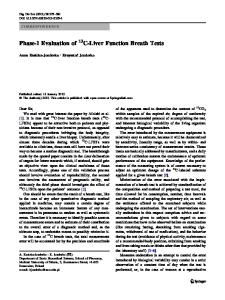Structural, impedance and electrical evaluation of complex perovskite: Ca(Mn 1/3 Ni 1/3 W 1/3 )O 3
- PDF / 3,339,598 Bytes
- 9 Pages / 595.276 x 790.866 pts Page_size
- 116 Downloads / 313 Views
Ó Indian Academy of Sciences Sadhana(0123456789().,-volV)F T3](0123456789().,-volV)
Structural, impedance and electrical evaluation of complex perovskite: Ca(Mn1/3Ni1/3W1/3)O3 MINAKSHI PADHY1, DEEPTIMAYEE KHATUA1, SUJIT KUMAR DEHURY2, R N P CHOUDHARY3 and P GANGA RAJU ACHARY1,* 1
Department of Chemistry, Siksha ‘O’ Anusandhan, Deemed to be University, Bhubaneswar 751030, India Department of Chemistry, Vikram Deb Autonomous College, Jeypore 764001, India 3 Department of Physics, Siksha ‘O’ Anusandhan, Deemed to be University, Bhubaneswar 751030, India *Author for correspondence ([email protected]) 2
MS received 30 September 2019; accepted 8 June 2020 Abstract. A complex perovskite Ca(Mn1/3Ni1/3W1/3)O3, abbreviated as CMNWO, is synthesized by adopting the solid-state ceramic procedure. The X-ray diffraction analysis of CMNWO shows that the present perovskite is acquiring a cubic crystal ˚ . The obtained cell parameter is in good agreement with the theoretical cell structure having the cell dimension of a = 3.8321 A parameter obtained from the SPuDS-V2.19.05.14 code. The micrograph describes the uniform grain distribution in the CMNWO sample. The average crystallite size of the sample was found to be 50.98 nm, which was calculated using the Scherrer relation. The dielectric and electrical properties like dielectric constant, dissipation factor, impedance, electrical modulus and conductivity of CMNWO were studied. The activation energies were determined from the AC-conductivity data in the temperature range of 200–350°C and 360–500°C. The dielectric spectra with temperature suggest that the present CMNWO is semiconducting in nature and follows the negative temperature coefficient of resistance kind of behaviour. Keywords.
1.
Perovskite; multiferroic material; electrical properties; Nyquist plots; dielectric relaxation.
Introduction
Multiferroics are generally single-phase materials that have two/more than two ordered ferroic parameters such as ferromagnetism, ferroelectricity, superconductivity, magnetoresistance, ionic conductivity, great dielectric property and ferroelasticity [1]. Now, most of the researchers are focusing on combining the magnetic and ferroelectric behaviours of different materials to fabricate the desired multiferroic material, which is in turn used in the memory devices, microelectronics and telecommunication [2]. Perovskites are named after the discovery of calcium titanium oxide (CaTiO3) structure (by Gustav Rose in 1839) and according to the name of Count Lev Aleksevich Von Perovski (Russian nobleman and mineralogist) [3]. The general formula for perovskites is A0 B0 X3, where two cations A0 and B0 are with distinct sizes and X is an anion like oxygen or halides or sulphides or sometimes nitrides also. The anion X can bind to both the cations to give more stable structures [4]. There are some perovskite structures derived from homologous series having different compounds of oxides, i.e., Ruddlesden-Popper (RP) phase, these types of perovskite structure consists of 2-dimensional perovsk
Data Loading...











